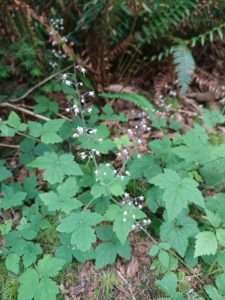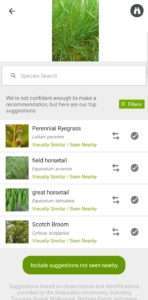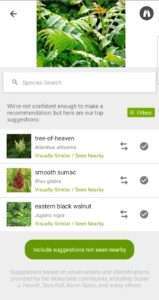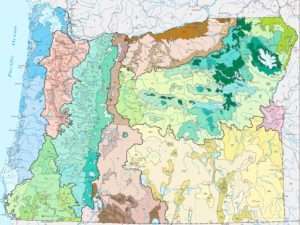I have mixed feelings about Michael Coren’s April 25 Washington Post article, “These 4 free apps can help you identify every flower, plant and tree around you.” His ebullience at exploring some of the diverse ecological community around him made me grin, because I know exactly what it feels like. There’s nothing like that sense of wonder and belonging when you go outside and are surrounded by neighbors of many species, instead of a monotonous wall of green, and that is a big part of what led me to become a Master Naturalist.

When I moved from the Midwest to the Pacific Northwest in 2006, I felt lost because I didn’t recognize many of the animals or plants in my new home. So I set about systematically learning every species that crossed my path. Later, I began teaching community-level classes on nature identification to help other people learn skills and tools for exploring their local flora, fauna, and fungi.
Let me be clear: I love apps. I use Merlin routinely to identify unknown bird songs, and iNaturalist is my absolute favorite ID app, period. But these tools are not 100% flawless.
For one thing, they’re only as good as the data you provide them. iNaturalist’s algorithms, for example, rely on a combination of photos (visual data), date and time (seasonal data), and GPS coordinates (location data) to make initial identification suggestions. These algorithms sift through the 135-million-plus observations uploaded to date, finding observations that have similar visual, seasonal, and location data to yours.

There have been many times over the years where iNaturalist isn’t so sure. Take this photo of a rather nondescript clump of grass. Without seed heads to provide extra clues, the algorithms offer an unrelated assortment of species, with only one grass. I’ve gotten that “We’re not confident enough to make a recommendation” message countless times over my years of using the app, often suggesting species that are clearly not what I’m looking at in real life.

Because iNaturalist usually offers up multiple options, you have to decide which one is the best fit. Sometimes it’s the first species listed, but sometimes it’s not. This becomes trickier if all the species that are suggested look alike. Tree-of-Heaven (Ailanthus altissima), smooth sumac (Rhus glabra) and eastern black walnut (Juglans nigra) all have pinnately compound, lanceolate leaves, and young plants of these three species can appear quite similar. If all you know how to do is point and click your phone’s camera, you aren’t going to be able to confidently choose which of the three plants is the right one.
Coren correctly points out that both iNaturalist and Pl@ntNet do offer more information on suggested species—if people are willing to take the time to look. Too many assume ID apps will give an easy, instant answer. In watching my students use the app in person almost everyone just picks the first species in the list. It’s not until I demonstrate how to access the additional content for each species offered that anyone thinks to question the algorithms’ suggestions.
While iNaturalist is one of the tools I incorporate into my classes, I emphasize that apps in general are not to be used alone, but in conjunction with field guides, websites, and other resources. Nature identification, even on a casual level, requires critical thinking and observation skills if you want to make sure you’re correct. Coren’s assertion that you only need a few apps demonstrates a misunderstanding of a skill that takes time and practice to develop properly—and accurately.

Speaking of oversimplification, apps are not a Master Naturalist in your pocket, and that statement —while meant as a compliment–does a disservice to the thousands of Master Naturalists across the country. While the training curricula vary from state to state, they are generally based in learning how organisms interact within habitats and ecosystems, often drawing on a synthesis of biology, geology, hydrology, climatology, and other natural sciences. A Master Naturalist could tell you not only what species you’re looking at, but how it fits into this ecosystem, how its adaptations are different from a related species in another ecoregion, and so forth.
In spite of my criticisms, I do think that Coren was absolutely onto something when he described the effects of using the apps. Seeing the landscape around you turn from a green background to a vibrant community of living beings makes going outside a more exciting, personal experience. I and my fellow nature nerds share an intense curiosity about the world around us. And that passion, more than any app or other tool, is fundamental to becoming a citizen naturalist, Master or otherwise.
